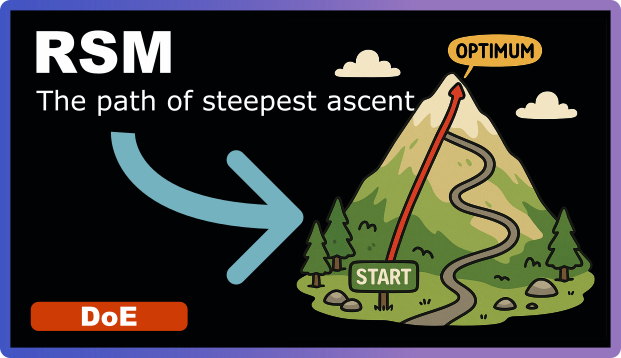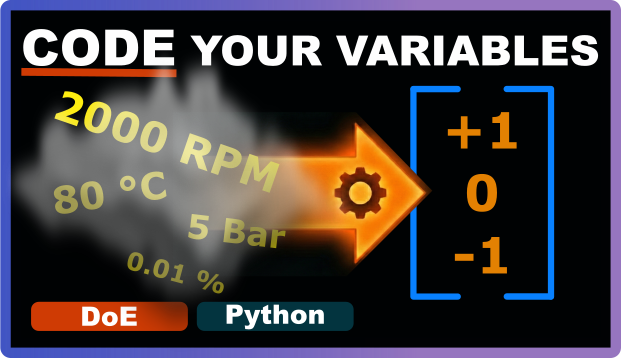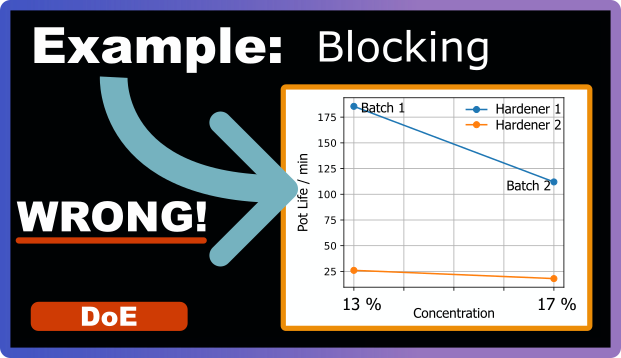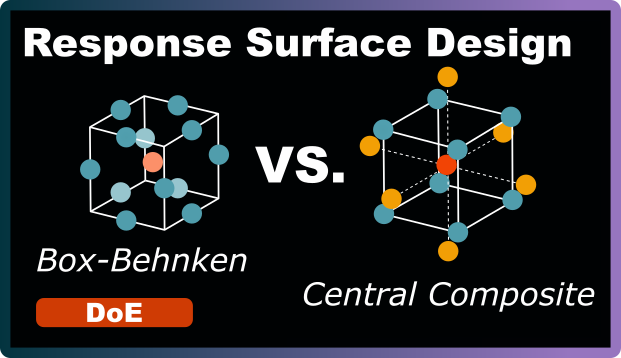
The Path of Steepest Ascent
When you're trying to optimize a process, you typically start with a design that gives you a linear model, like a fractional or full factorial design. But most of the time, you're not in the region of
Read MoreShowing 10 of 29 posts

Say you're running an experiment with concentration ranging from 0.1% to 1.0% and stirring rate from 1000 to 2000 RPM. If you fit a model using these raw values, the stirring rate coefficient might be
Read More
When you're trying to optimize a process, you typically start with a design that gives you a linear model, like a fractional or full factorial design. But most of the time, you're not in the region of
Read More
Imagine having a magic button that tells you the perfect combination of temperature, pressure, concentration, and time to maximize your yield. That button doesn't exist, but **Response Surface Methodo
Read More
We've talked about blocking as one of the three fundamental principles of DoE before. In theory, it makes sense: group your experiments by known sources of variability to keep them fro
Read More
In Design of Experiments (DoE), we structure our experiments to extract maximum information from minimal trials. However, without proper error management, even the most sophisticated e
Read More
This guide walks you through creating Box-Behnken designs using Python's pyDOE3 package. I won't dive deep into the theory—if you need background on response surface methodology or why Box-Behnken d
Read More
Bayesian Optimization promises to make experimental design smarter and more efficient by iteratively selecting the most promising experiments based on previous results. But how do we know if it's actu
Read More
Science is about solving problems through experiments. In chemistry, this might mean maximizing the yield of a reaction or improving the hardness of a coating. Traditional methods like full factorial
Read More
Response surface designs help you capture curvature in your experiments—something that traditional factorial designs can't do on their own. We've already explored how [central composite designs](/blog
Read More
Commercial DoE and statistical software are incredibly powerful, but they also come with a hefty price tag. In addition, such software can be pretty daunting because of their many features of which yo
Read MoreNo posts found for the selected categories.